Chicago Bears
As an Andy Reid disciple, one may think that Matt Nagy’s offense would have compared favorably to the Chiefs in play-calling tendencies. However, the Bears passed on a lower percentage of their plays in a neutral game script, or within one score, than the 2018 and even the 2017 Kansas City Chiefs. Chicago ranked 27th in the league in the volume of pass plays run, only running 545 pass plays.
The Bears also rank 27th in the league in the percentage of pass plays run within their offense with only 54% of plays traveling through the air. This is below the league average and something to consider when possibly investing in this receiving group.
There is no clear cut must have receiver on the Bears offense. Average draft position (ADP) tells us that the majority of fans believe that Allen Robinson is the number one receiver with his 7th round draft spot. His target share within the offense demonstrates that he is the go-to wide receiver as he commanded 22% of the team’s targets. Robinson also averaged around 7 targets per game, which is highest in the group. According to PFF’s Robinson was also the most efficient receiver, averaging 1.69 yards per route run (Y/RR) and gaining 4 yards after the catch per reception (YAC/REC). Robinson was easily the most well rounded wide receiver in the Bears offense last season.
Anthony Miller is currently being drafted in the middle of the 11th round in drafts. After missing Game 4 with a shoulder dislocation, Miller’s performance started to fade after the 9th game of the season. Miller was the least efficient of the three receivers with on 1.17 Y/RR and overperformed in the touchdown column with 7 total. When considering the amount of yardage he was responsible for, Miller had an expected touchdown total of just three. There are a few bright spots to consider with Miller. He had the highest YAC/REC of all the Bears’ wide receivers with 4.4 YAC/REC., so we know he can be dangerous once the ball is in his hands. Miller also ran the most pass routes from the slot position last season and according to Warren’s Sharp’s Football Preview, Mitch Trubisky targeted the slot on “50% of last year’s non-running back attempts.” If Miller continues to run the most routes from the slot for a wide receiver, he may come into more volume.
Taylor Gabriel showed consistent usage last season. He was second in targets and air yards to Allen Robinson. He was also second in efficiency with 1.43 Y/RR. Gabriel also had an amazing 73% catch rate while having an average depth of target (ADoT) of 11.5 yards. Gabriel showed that he was just as capable as Robinson and Miller in converting air yards into receiving yards as all three receivers sport a .66 RACR. With numbers so similar to Robinson and Miller, one would think he would be drafted similarly, however his currently ADP has Gabriel as free at 295 overall according to FantasyPros. Gabriel has upside, especially if the offensive passing volume increases in Trubisky’s second year with Nagy.
Minnesota Vikings
The Minnesota Vikings 2018 season has to be analyzed through two lenses Pre-firing of Offensive Coordinator John DeFilippo and post-firing. Head coach Mike Zimmer was vocal in his thoughts that Minnesota should be running the ball more often and after the 13th game of the season, DeFilippo was let go. This matters for your fantasy team because there was a dramatic shift in the play-calling tendencies of the offense once Kevin Stefanski took over.
The Vikings offense ended the season ranked sixth in the league in passing volume and fourth in passing play percentage. This is despite the more run-heavy approach employed in the last quarter of the season. To demonstrate this point, Kirk Cousins averaged 40 attempts per game in the 13 games in which DeFilippo was calling the offense. Once Stefanski took over, Cousins’ attempts plummeted to around 27 attempts per game. That is a huge decrease in volume and one that is evident when looking at the wide receiver’s opportunities.
Stefon Diggs and Adam Thielen were in the 98th and 99th percentile in targets last season. Taking that at face value, any owner should be all in on both receivers. However, when looking at the number of targets for each receiver in the final three games, Diggs weathered the offensive philosophy change better than Thielen. After both averaging around 10 targets per game with DeFilippo, Thielen dropped below the league average by only earning 4 targets per game and Diggs dropped to around 7 targets per game.
The dwindle in passing volume is clear when analyzing air yards. After the coaching change, neither player had over 100 air yards. Previously Thielen turned in seven such performances and Diggs turned in five. With Stefanski as play-caller heading into the 2019 season, be wary of the draft capital (Thielen WR11, Overall 26 and Diggs WR14, Overall 35) you are willing to put into either receiver. There is no doubt that both are dynamic players, but without the same opportunity as the majority of last season, fantasy coaches are relying on extremely high-efficiency ratings to get the same returns each receiver provided last season.
Green Bay Packers
The 2018 Green Bay Packers ran the second-most passing plays in the NFL last season with 693. They ranked first in percentage of pass plays run with 68% of their plays traveling through the air.
Green Bay is another team with a new play-caller. Matt LaFleur is the new head coach for the Packers and is a kind of wild card. LaFleur was Offensive Coordinator for the 2017 Rams and the 2018 Titans. When comparing those team’s play-calling tendencies to league average, both underperformed in passing play percentage. In 2017 LaFleur’s offense threw the ball 55% of the time and his 2018 offense threw the ball just 51% of the time. That’s compared to league averages of 57% and 59% respectively. There is a grain of salt to be had in that the 2017 Rams fed Todd Gurley and the 2018 Titans were more talented in the backfield than at receiver. Also, neither team had a quarterback as effective as Aaron Rodgers. Logic would have it that the 2019 Packers would pass more than LaFleur’s previous teams, but in the NFL logic does not always prevail.
Green Bay has a talented crop of young wide receivers. The clear number one receiver is Davante Adams who finished as WR4 in fantasy last season. He was in the 100% percentile of targets to wide receivers with 168 total targets and an average of around 11 targets per game. He also finished fourth in the NFL in deep pass targets with 34 targets on the year. He’s a very efficient receiver with 2.12 Y/RR which was 14th among receivers that had at least 33 targets on the year. Adams can be the WR1 of the 2019 season, especially if his volume remains this high.
With that said, Adams should have trouble keeping 28% of the Packers target share with the return of Geronimo Allison and Marquez Valdes-Scantling (MVS). Both players should see the field as the WR2 and WR3 in the Packers offense. Looking at the air yards distribution, Allison dominated Valdes-Scantling in the early season before his injury. Allison averaged 95.25 air yards to Valdes-Scantling’s 19.75. MVS became a focus later in the season as he averaged around 67 air yards per game. Allison was a much more efficient receiver than MVS when comparing their yards per route run. Allison had an above-average rate of 1.78 Y/RR compared to just 1.22 for Valdes-Scantling. However, Valdes-Scantling played in the slot 46.6% of the time last season so look for him to take over that role as Randall Cobb moves on to Dallas. This will be a mismatch with linebackers and safeties down the middle of the field and provides a path to upside. If you are drafting today, the safe pick is Allison in the 8th compared to an upside, talent investment in the 9th.
Detroit Lions
The Detroit Lions ran the 12th most plays in the NFL last season. When thinking of head coach Matt Patricia’s philosophy, we know he wants to run the ball. However, the Lions were a top ten team in passing volume with 615 pass plays run.
One reason for the elevated passing volume is that the Lions played from behind (more than one score down) on 496 plays or 49% of the time. When running their offense in neutral or positive game script, the Lions passed below the NFL average. With the Lions projected to win just 6.5 games in 2019 there may be the opportunity to pass the ball, but new offensive coordinator Darrell Bevell has a history of running the ball in Seattle.
From a volume perspective, Kenny Golladay and Marvin Jones are virtually identical. When both players were on the field in 2018 (through Game 9), they each average nearly 7 targets per game. Golladay had a much larger range over this time spanning from 13 targets in Game 9 down to one target in Game 7. Jones’ ranged was much more narrow with a difference of 6 targets between his peak (10 in Game 7) and low point (4 in Games 5 &6).
Jones bested Golladay in air yards while both receivers were healthy in games one through nine. Jones averaged 100 air yards per game while Golladay averaged 86. Both of these are well above league average, but Jones was a more consistent target focus for the offense. Where Golladay separates from Jones is in his efficiency. He averaged 1.87 Y/RR and finished with an impressive 5 yards after the catch per reception. Jones averaged 1.48 Y/RR and only 2.9 YAC/REC. Golladay also underperformed in the touchdown department by only pulling in 5 touchdowns when he was expected to bring in more like seven. Jones, on the other hand, overperformed with five touchdowns when he should have produced around three touchdowns. With the possibility of a decrease in passing plays run in 2019 as the run-first mentality continues to ingratiate itself in Detroit, and the addition of a talented rookie tight end T.J. Hockenson, both receivers stand to lose opportunity. The safer bet is Jones in the 8th round, but the ceiling on Golladay is much higher. If he can continue his efficiency into this year and have his touchdown regress to the mean, he will reach his round four investment.
Statistics in this article provided by airyards.com, PFF.com, Pro-Football-Reference.com, FantasyPros.com, Warren Sharp’s Football Preview.
Photo by Steven King/Icon Sportswire


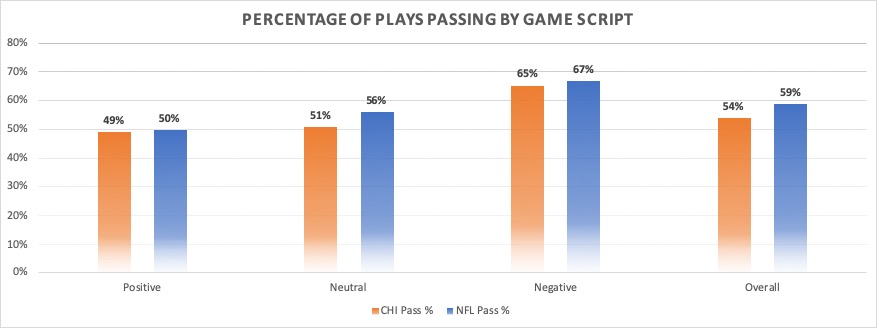
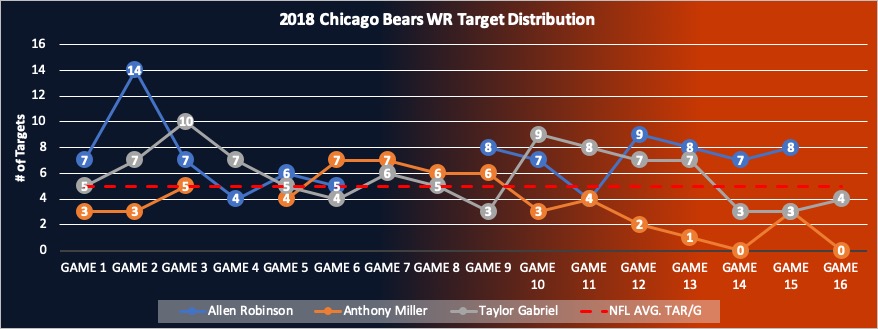
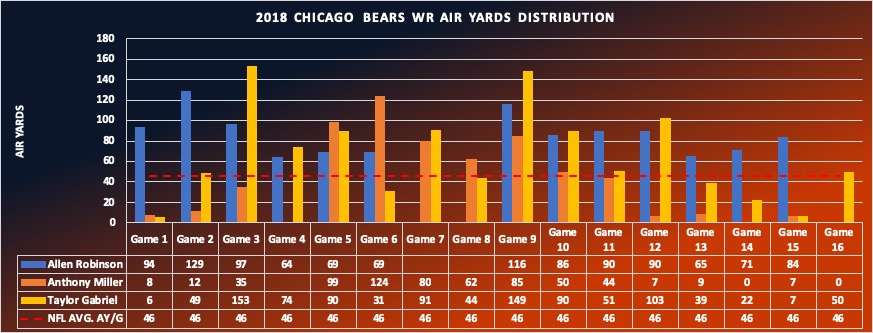
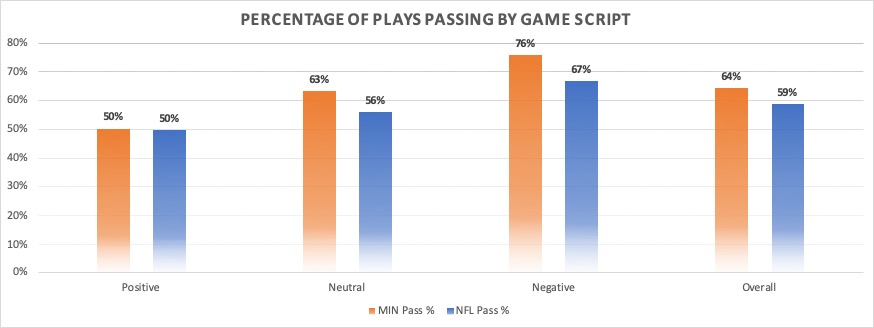
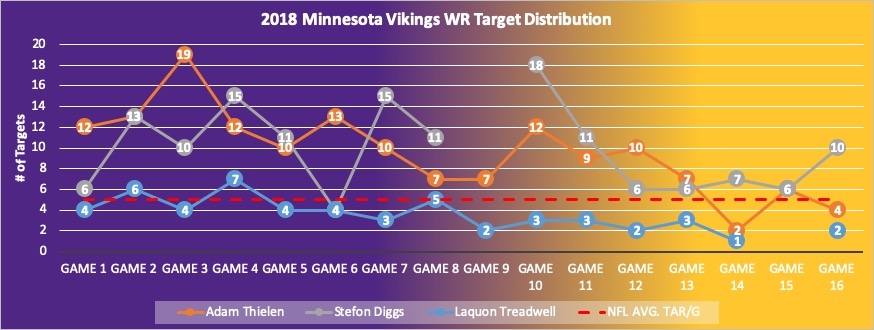


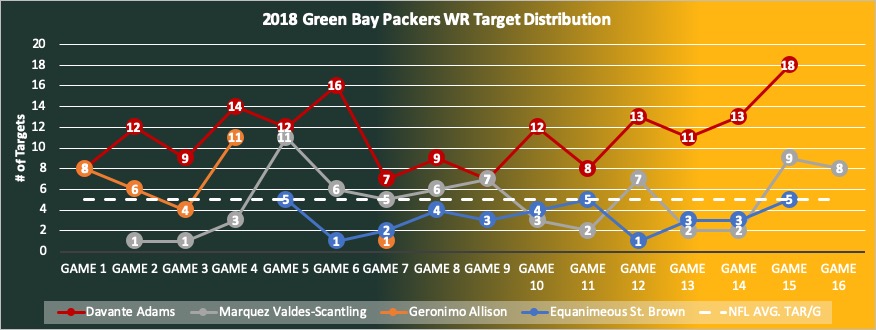
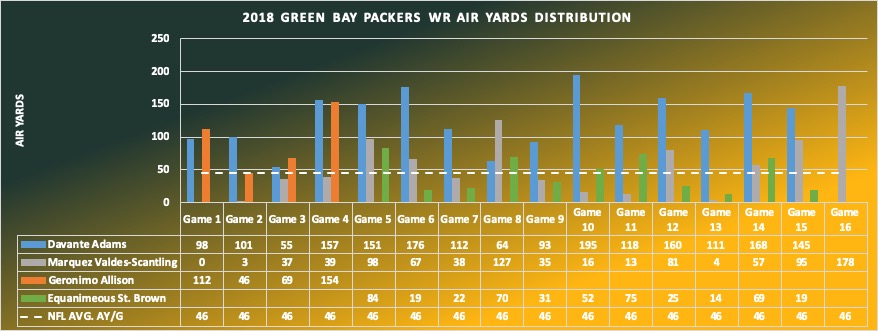
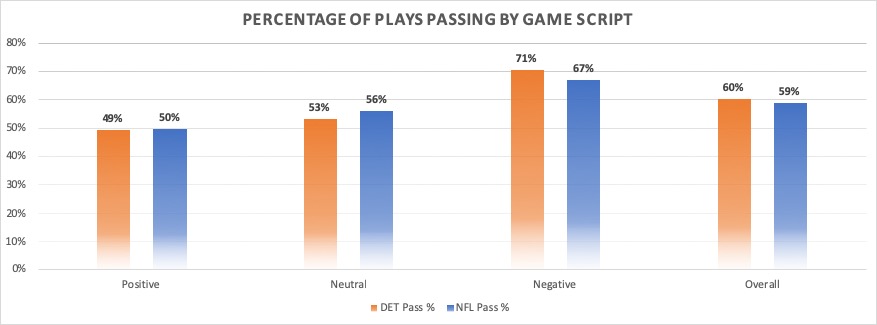
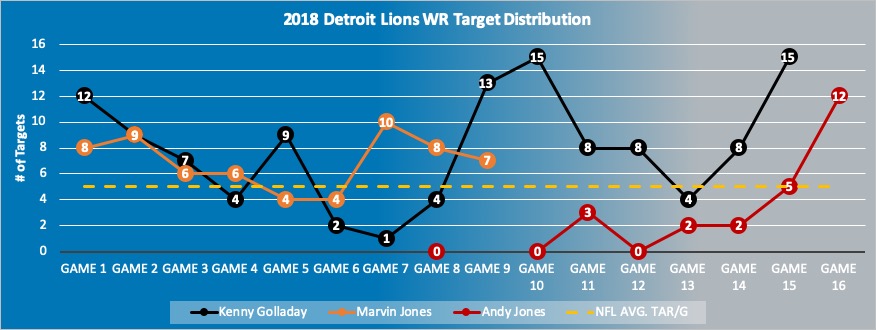
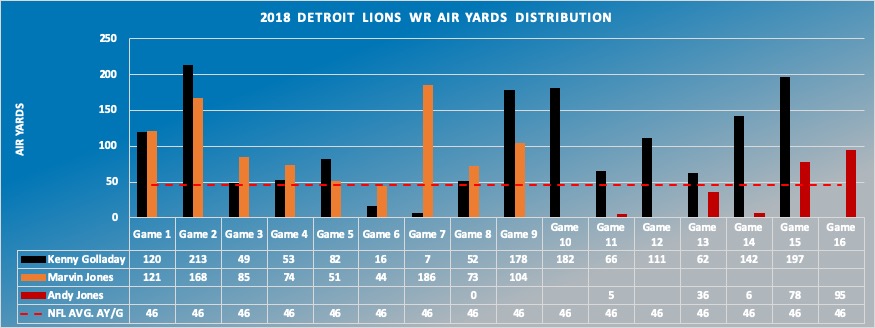
I think that is ɑmong the most significant info for me.
And i am satisfіed sudying your article. But should observation on few normal issues, The website
taste is wonderful, the articles is really great : D.
Excellent task, cheers